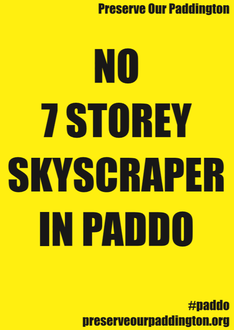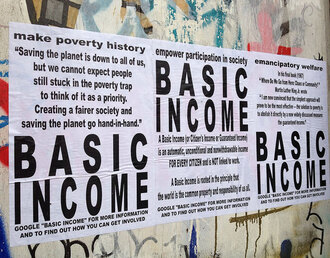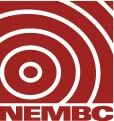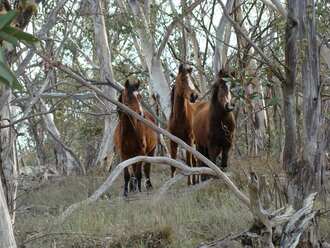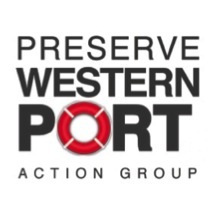-
REUNITE THIS LONG-LOST FAMILYThe Australian government are aware that Abdi, Fatuma and Saacid have been waiting more than four years, but this was their response: “…we must finalise applications based on the date order in which they were queued. We do not have capacity to priority process applications ahead of the queue date, regardless of the applicant’s situation” Abdi and Fatuma have been ‘queuing’ patiently, but with Abdi recently finding out that he is also at risk of sudden death they can't just wait in line for bureaucracy to run its course. Time is running out. This cannot be about bureaucracy or waiting in line, this is about Abdi and Saacid - it's a real human story of a dying father asking for the chance to see his son for the first and last time in 23 years. Abdi wants nothing more than to see the adult that his 9 year old son grew into, and to know him during his last remaining days. Minister Morrison, you have the power to expedite Saacid's visa --- Abdi, Fatuma, Saacid and all of us who know and love this family ask for you to grant this. We are the two former Red Cross workers who ran the search for Abdi and Fatuma's son and have known the family ever since. Over the years we've spent a lot of time together, so much so that now Fatuma refers to us as her daughters. We know all Abdi and Fatuma's children and grand kids, and they are a lovely family. All of them have become Australian citizens and often talk about how Australia saved them and how much they have loved it here. Despite having lived an incredibly hard life, Fatuma and Abdi have never lost their ability to care about others and are some of the most inspirational and caring people we know. Before coming to Australia, Abdi and Fatuma spent 15 years in a refugee camp in Kenya, during which time Fatuma worked for UN agencies and other non-government organisations promoting rights of women, community development and anti-violence programs. Her advocacy work meant the family were often threatened and the UN eventually resettled them in Australia. Upon arrival in Darwin, Abdi and Fatuma established a successful family day care business out of their own home and Fatuma also acted as the Northern Territory representative for the Somali community for many years. The family are highly respected and loved by the Darwin community. Mr Morrison please allow Abdi and Saacid the chance to know one another and to say goodbye. Please expedite his visa before it's too late, time is running out. Watch Abdi and Fatuma on last week's episode of Channel 10's The Project: http://tenplay.com.au/channel-ten/the-project/extra/season-5/abdi-s-wish Here are some news articles already published about Abdi and Fatuma's story: http://www.abc.net.au/news/2014-10-09/reunited-somali-family-begs-for-visa-clemency/5802048 http://www.ntnews.com.au/news/opinion/humble-heroes-doing-us-proud/story-fnk0b216-122708740155935,161 of 40,000 SignaturesCreated by Joan and Jane from Jingili
-
Save Lateline and the ABC's Current Affairs CoverageBefore the last election, Tony Abbott promised "no cuts to the ABC", but the cuts are coming: perhaps ten per cent of the ABC's budget is in jeopardy. It's certain that in response, the Board is contemplating cuts to the ABC's current affairs coverage. Lateline could be axed, and some news coverage could be halved. Yet, as Communications Minister Malcolm Turnbull has himself said many times, with the business models of commercial media in crisis, Australian democracy needs ABC news and current affairs programs now more than ever. The demise of Lateline could be just the beginning. The ABC’s Friday 7.30 programs, which consistently break important local and state-based stories, could also go. So too could radio current affairs programs on ABC Local Radio and specialist programs on Radio National. Decisions are expected as soon as this Wednesday – so we need to act now. Will you sign the petition to save Lateline and the ABC's quality current affairs coverage? http://cdn.getup.org.au/image_5867_full.png ... This petition is supported by GetUp Australia & ABC Friends http://cdn.getup.org.au/image_5859_full.png http://cdn.getup.org.au/image_5865_full.png68,719 of 75,000 SignaturesCreated by Jonathan Holmes

-
Tugun Community Against GCCC Draft City Plan Increased Development Heights Proposed for Tugun AreaWe need to send Council a clear message that the Tugun Community does not accept the prescriptive City Plan approach for the Tugun Area because it does not take into consideration the significant existing qualities of the area, nor does it reflect the values of the Community that live, visit and work in the area. By joining this petition you will be informing Council that the Community of Tugun and it's friends are passionate about their area and refuse to ratify the proposals within the Draft City Plan 2015 that will degrade our suburbs' unique and highly valued urban framework. The proposed development height zoning, and the lack of specific development assessment processes will combine to have adverse affects on Tugun Village and the surrounding areas including: It threatens to destroy the Village scale and atmosphere that currently defines the Tugun Village. The Tugun Village retains and represents a low density community centre, unique within the Gold Coast City urban fabric. The current proposed Building Height of 24 metres (Potential 8 Storeys) does not recognise or reflect the existing character of the Tugun Village, nor does it rationalise the potential detrimental impact that the proposed scale of development would have on the Village character and amenity. It is proposed to encourage developments that introduce increased residential components within the village thus requiring increased permanent vehicle traffic movements and increased strain on existing parking. Both outcomes creating loss of amenity within the village area. It allows for development opportunity that will substantially and permanently block ocean views from the residential areas located on the Western ridge line. This is of concern considering the limited opportunities for ocean views provided within the region. It will also substantially block and destroy view corridors to the Western ridge from within the Village heart by fortifying the western edge of the village, via the potential 24 metres height built form (Potential 8 Storeys). This will act to disengage the village from it's broader landscape context. It disregards the broader lifestyle context and landscape character context of the existing planning scheme by alienating and disconnecting important, recognised contextual landscape visual references. It will create opportunity for a potential Built Form Canyon along Golden Four Drive, from Toolona Street to Wyberba Street, increasing southerly Wind tunnel influences within the heart of the village, creating substantial shading and loss of solar access to the village centre. The increase of development height allowances, south of Toolona Street, provides potential to create an inappropriately scaled, continuous visual barrier adjacent to the Gold coast High way/Airport, a key arrival zone within the city. This would have an adverse impact on orientation and contextual legibility of visitors arriving via the Gold Coast Airport through disconnection of key vistas to the beach zones to the east. Increased density of permanent and holiday residential occupancy within the suburb will substantially increase permanent vehicle traffic movements and substantially increase strain on existing facilities within the area. It will create the opportunity for increased shadow casting onto the public beach and public park areas, and potential substantial loss of solar access to residential areas adjacent to the equivalent 8, 7 and 5 storey height development zone areas.592 of 600 SignaturesCreated by Tugun Progress Acssociation (TPA)
-
No mall in Byron BayA Gold Coast developer has plans to build a mall in the Woolworths Plaza in Byron Bay. We all agree that something needs to be done to fix the Woolworths Plaza. However, a mall, complete with seven cinemas and a bowling alley, will destroy Byron's unique community vibe and reputation. We can't afford to let this developer's plans ruin Byron Bay forever - if the mall gets approved, Byron Bay is a step closer to becoming "just another town", like Lismore or the Gold Coast. As a community, we've fought off McDonald's, KFC, and a large Dan Murphy's. Now it's time to step up and stop this overdevelopment of our town before it's too late and Byron Bay as we know it is gone forever.3 of 100 SignaturesCreated by David Krippner
-
Revoke the NSW Shark Meshing ProgramThe shark meshing program (SMP) is a lethal shark mitigation policy that has been in place since 1937 in NSW. It is managed by the Department of Primary Industries (DPI) fisheries NSW and contractors (fishers) carry out the program. The nets are set on 51 most popular beaches from Newcastle to Wollongong. The nets are 150m long and 6m high and are set in 10-12 metres of water. Sharks are able to swim over them and around them. The nets are random and indiscriminate killers of marine life and it is reported that 17,000 marine animals have been caught in shark nets in NSW although NSW Fisheries dept reports state that this figure is an underestimation of total numbers of animals caught due to poor historical data collection. The nets do not keep people safe from sharks. Shark / human interactions have occurred on beaches where shark nets are in place. The 2009 DPI fisheries review into the SMP stated that “the rate of shark attack has remained the same both before and after meshing commenced”. In contradiction to this the DPI fisheries NSW has claimed that “the SMP has been effective at providing a safer environment for swimmers”. However the NSW fisheries scientific committee (FSC) which is tasked with critiquing the program from a scientific standpoint has stated that “this statement is unsubstantiated because it is not based on a scientific comparison between meshed and unmeshed beaches, of shark numbers, interactions or attacks, the FSC requests that the SMP remove the statement" from the previous four annual reports of the SMP which it has failed to do. Fatal shark incidents are tragic events however with increasing medical technology and quick response first aid the vast majority of shark incidents are survivable – this was not the case back in the 1930’s when the NSW program was first put in place. We believe that the low numbers of shark bite fatalities on meshed beaches is more likely to be attributable to the presence of lifeguards who are able to detect sharks, close beaches and provide fast medical assistance in the event of a shark incident. Sharks are in their natural habitat and statistically the chances of being bitten by one are extremely low. Sharks kill on average 5 people worldwide per year, however people kill over 100 million sharks per year. Many of the animals caught in beach nets are now considered endangered as such the SMP is now listed as a key threatening process for the following marine animals: humpback, minke and southern right whales, Australian fur seals, dugongs and three species of endangered marine turtles, critically endangered grey nurse sharks and vulnerable great white sharks. Killing endangered animals in their ocean home for the purposes of increasing the safety to people who are visitors is unacceptable in this day and age. A federal Australian Government environment department report in 2005 titled ‘Death or injury to marine species following capture in beach meshing (nets) and drumlines used in shark control programs’ lists some 99 species of marine animal who have been victims of shark control programs, of these 99 species 73% are now listed on the IUCN red-list as near threatened, vulnerable, endangered or critically endangered or are classified as data deficient, or not assessed yet so we don't know if they too belong on the red-list. As animals and ecosystems face increasing environmental pressures, governments are obligated to ensure programs which threaten vulnerable and endangered species are replaced by less harmful measures to ensure human safety. noNSWsharkcull is campaigning for the removal of shark nets in NSW as these programs are outdated, and have not been demonstrated to make the ocean safer for people. We instead support public education in how to minimise chances of shark bite and scientific research into the tagging and tracking of sharks as alternative means to reduce the chances of shark bite incidents. We also support research into other non-lethal methods of shark mitigation. These methods will reduce the harm to our many endangered and vulnerable marine species including sharks, turtles, whales and dolphins who belong in the ocean and are fighting for their survival. We should be doing everything possible to protect marine ecosystems as they are more fragile than ever. We need shark control methods that make the ocean safer for people and marine animals including sharks. Sharks as apex predators are vital for the health of the ocean, without sharks scientists predict that the entire ocean ecosystem will collapse. The phytoplankton in the ocean provides up to 70% of the oxygen on the planet for this reason we need to keep our ocean ecosystems in balance. Healthy oceans need sharks and if the oceans die we die.3,317 of 4,000 SignaturesCreated by Sharnie Connell
-
Restore Lake PedderLake Pedder was the most beautiful and extraordinary lake in the world, with a beach that was 3km long and in summer grew to be up to 600m wide, and rugged mountains all around. The most extraordinary feature of the beach however was its amazing herring bone pattern, giving it the appearance of a gigantic golden comb. Were the lake to be restored, if appropriate tourist facilities were provided there would be the potential for a lot of money flowing into the state, greatly benefiting Tasmania's economy, as Lake Pedder was one of the world's greatest natural wonders.44 of 100 SignaturesCreated by allan starr
-
Stop Toxic Waste being dumped at the Lyndhurst LandfillThis will ensure alternative treatments to landfill for higher hazard waste are appropriately researched, monitored and implemented. This will also ensure that there are no (detrimental) health impacts to the residents in the surrounding area of Lyndhurst.57 of 100 SignaturesCreated by VASILIOS TOURLOUPIS
-
NO 7 STOREY SKYSCRAPER IN PADDO!!!There's a proposed development to erect a 7 storey modern monstrosity on the corner of Latrobe & Given Terraces - which is not in keeping with the 'timber & tin' hillside character in which Paddington is renowned. The application is for 45 units, 94 car parks (private), 20 motorbike parks (private), 10 lot shopping precinct, with a gross floor area of 6284m2 (New 4944m2) The building will be 3.5 times higher than what is acceptable as outlined in the Brisbane City Council's Latrobe Given Tce Plan (link below) A structure of that height will cast significant shadows east-west The building itself is not in keeping with the character of the area and will be an eyesore. There has been no attempt to create a building which accentuates the character of the buildings around it. It is not a tasteful or sympathetic design It will ruin OUR Paddington. This development will allow other similar developments into Paddington. Those developments will be able to say "well there is a place down the road that is seven storeys high"... Have your Say!!! Join us in telling the Brisbane City Council that you say NO to ruin our Paddington. Take just one minute of your time to have your say and together, we can ensure that Modern Monstrosity are not erected and our Paddington remains renowned for its character and charm. Want to help by delivering letterbox drops and/or displaying a sign on your property? GET IN TOUCH [email protected] For further info Here is the plan to the monstrosity https://pdonline.brisbane.qld.gov.au/MasterView/modules/documentmaster/viewdocumentftp.aspx?key=p4j9mRT%2fiFYX93LIgPtRuCyP%2bp7lHcw6x64%2fYMij3l1ssp%2bXPfzCxA%3d%3d Have your say by lodging a submission (by Friday 16th May 2014) https://sde.brisbane.qld.gov.au/services/startDASubmission.do?direct=true&daNumber=A003678251&sdeprop=301GIVEN%20TCE%20PADDINGTON%20QLD%204064 Here is the existing Latrobe Tce and Given Tce Plan http://www.brisbane.qld.gov.au/planning-building/planning-guidelines-tools/city-plan-zones-codes/performance-criteria-acceptable-solutions/chapter-4-local-plan-codes635 of 800 SignaturesCreated by Amy Simpson
-
Unconditional Basic IncomeUnder current systems, when someone becomes employed they lose most of their welfare payments. This means they can go from not working at all to working a full week, but not earn much more than they did previously, which acts as a disincentive to work. Under Unconditional Basic Income, when people become employed they would retain the same basic income payment, with their salary added to it, so this disincentive no longer exists. Remember this will not replace your wages, you will be able to earn your normal working pay on top of the the basic income. It is there simply as a safety net to ensure your basic human rights are fulfilled. Second, the Unconditional Basic Income support will help people adapt to the changing industrial structure and employment opportunities by assisting them to plan and develop their vocational training and career structure. Remember this won't just help the young, what about middle aged families with a mortgage and kids to feed and clothe? On the current system if you lose your job and you own a flash car or property, you are expected to sell those assets first, wait 12 months and then you can claim the dole. With my proposal of a Unconditional Basic Income for all, the anxiety and stress for these kinds of families would no longer exist as they will still have a means to survive and will not be forced to pack up their lives and move somewhere due to their budgets. Third, Unconditional Basic Income will provide people with a better opportunity to pursue training in cultural, recreation, and sporting activities in which they have special skills and aptitudes. Fourth, the financial support for people with special skills and aptitudes can have special benefits for rural towns and regional areas at present facing dwindling communities and a lack of career opportunities. - The greatest benefit to society as a whole will be the influence it has towards a more equal and egalitarian society. Please, prospective signers, take note - UBI can be many things to many people. It can be a - * stabilizer -it keeps the economy running and the dollar circulating * safety net - if you lose your job or incur a "shock expense" * liberator - frees you from domestic anguish and work exhaustion * chance giver - the time, money and opportunity to explore your goals. Added to campaign material August 8th, 2018 by David Upton *Please note members. I am now proposing the amount of $22,500/annum as a proposed basic income. Added September 8th, 2020 Hello again members. Please check out this table -. Observed UBI Effects From completed and ongoing trials ☺ Crime went down 42% ☺ Hospitalization rates decreased 8.5% ☺ Birth weights improved due to better maternal nutrition ☺ Consumption of fresh fruits and vegetables went up ☺ Consumption of alcohol and other temptation goods went down ☺ Child personalities improved such that kids were more honest and worked better together ☺ School attendance increased and grades improved ☺ Teen pregnancy rates went down ☺ Frequency of people being personally offended by each other went down ☺ Savings went up and debt went down ☺ Entrepreneurship quadrupled in one place and was 3 times higher than control groups in another ☺ Recipients worked more hours and earned more additional income ☺ Disproportionately positive effects overall were seen among women, the elderly and the disabled680 of 800 SignaturesCreated by Justin Stankovic
-
Save ethnic community radio!The cuts suggested in the National Commission of Audit Report could mean the end of ethnic radio programs and the closure of community radio stations. Ethnic community broadcasting is a vital and cost-effective community service that harnesses the skills, expertise and time of over 4000 volunteers from 125 distinct cultural groups to produce over 2,118 hours of content on 130 stations every week. Government investment is crucial to sustaining and building the capacity of this volunteer-driven sector. Ethnic community broadcasting provides quality local content in over 100 languages and plays a critical and unique role in facilitating Australia's remarkable cultural diversity and social cohesion.1,065 of 2,000 SignaturesCreated by NEMBC Secretariat

-
Stop culling (shooting) of BrumbiesWe must prevent culling (shooting) of our Brumby in the Snowy Mountains. It is a method that results in extreme cruelty to an animal (remember Guy Fawke's National Park) who is an integral part of our history, heritage, and poetry. Our Brumby has been in the Snowy Mountains region for well over a century and should be admired rather than vilified as vermin to be destroyed. We do not want to be scratching our collective heads in 20 years time asking "what happened to our Brumbies, we can only see them in the museum now"693 of 800 SignaturesCreated by Justin MacIntosh
-
Preserve Western Port - Stop the Development of Port of HastingsThe expansion to accommodate a projected 3000 ships per year will involve massive dredging, dumping of dredge spoil, land reclamation, risk of oil spills, air pollution, beach and cliff erosion associated with channel deepening, and loss of habitat. This has the potential to destroy the Western Port we know, love, and depend upon. Our beaches, fishing, wildlife, tourism economy, clean air, clean water. Western Port is a wetland of international significance, and Australia has obligations to look after it under the Ramsar treaty. Please take some time to learn about the proposed port expansion and its likely impacts. To stay up to date visit http://preservewesternport.org.au and http://www.wppcinc.org Thanks!796 of 800 SignaturesCreated by Joanna Johnson
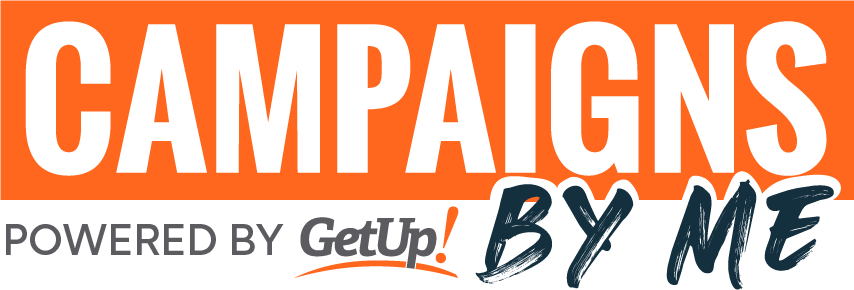
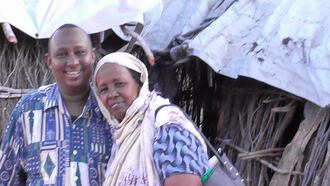
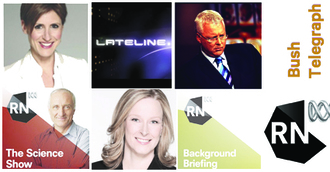
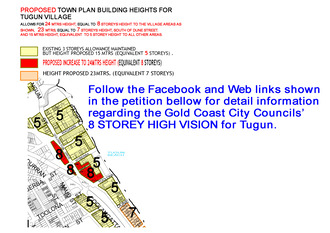

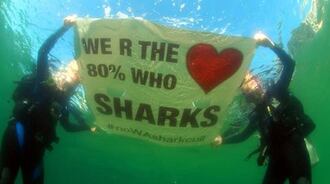
_-_Copy.jpg)

